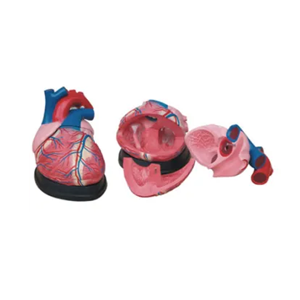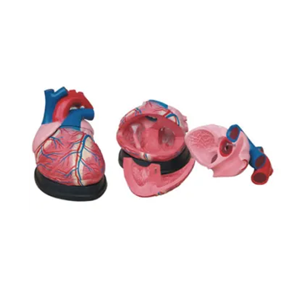ADA MED SUPPLY LIMITED
Phone:+86 19937901373
Tel:+86-0379-65160607
Email:adaanatomy@adaanatomy.com

Article tag: Heart anatomy model organ anatomy model

The heart anatomy model, a seemingly silent teaching aid, actually contains profound historical accumulation and the imprint of scientific and technological progress. It is not only an important tool in medical education, but also an indispensable witness in the course of medical progress.
Since ancient times, human beings have never stopped exploring the heart, the pump of life. From the initial vague cognition to the detailed anatomy later, the cardiac anatomy model, as a product of this exploration process, witnessed the continuous accumulation and deepening of medical knowledge. From simple wood and wax models to today's high-precision 3D printing models, each technological innovation has made the structure and function of the heart more realistic, providing a strong support for medical education.

In the field of medical education, it plays an irreplaceable role. It makes the abstract structure of the heart visible and helps students better understand the shape, location, adjacency and function of the various parts of the heart. Through touch, observation and even operation of the model, students can more deeply grasp the mechanism of heart disease, clinical manifestations and treatment methods, and lay a solid foundation for future clinical practice.
At the same time, it is also an important auxiliary tool for medical research. Researchers can use the model to simulate experiments to explore the pathologic process of heart disease and the mechanism of drug action. This "pre-experiment" on the model not only reduces the risk of conducting experiments directly on humans, but also improves the efficiency and accuracy of the research. With the progress of science and technology, the function of cardiac anatomy model is also expanding, such as combining virtual reality technology, can create a more realistic heart simulation environment, and provide more abundant means for medical research and education.
In addition, it carries the historical memory of medical progress. In the process of using the model, each generation of medical workers will feel the wisdom and sweat of their predecessors, so as to cherish the current learning opportunities and research results more. This spirit of inheritance and innovation is an important driving force for continuous medical progress.
To sum up, it is not only an important tool in medical education, but also a witness in the course of medical progress. It has witnessed the accumulation and deepening of medical knowledge, the progress and development of medical technology, and the tireless exploration and pursuit of human life mystery. In the coming days, we have reason to believe that with the continuous progress of science and technology and the in-depth development of medical research, the cardiac anatomy model will continue to play its unique role and contribute more to the prosperity and development of the medical cause.